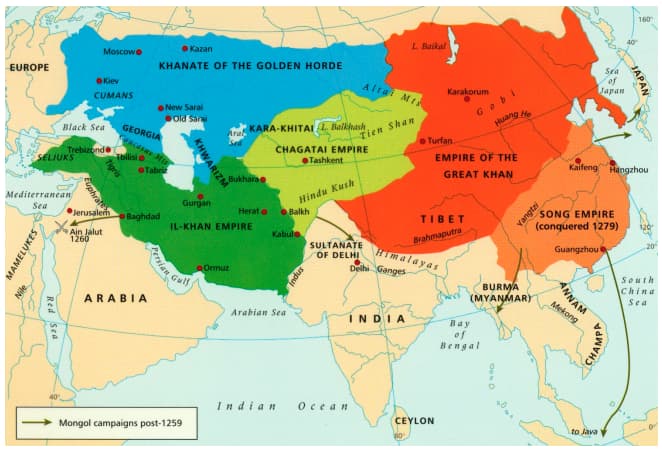Both represent the Golden Horde, and while one is clearly Muslim, the two have an overlapping history. I’m not saying they shouldn’t remain separate or anything; I like them the way they are. But what I’m wondering about is how the Tatars’ history is different from the Mongols.
The Tatars are not the Golden Horde. If anything, it’s the Chagatai, then the Timurids.

But for gameplay matters, the choice of which steppe civ is picked has some degree of flexibility.
The in-game history section disagrees:
When the Mongol Empire was divided into four appanages, the connotation with the Tatars became more specific to the northwestern region, known as the Golden Horde (1227-1502).
The term “tatar” (and sometimes “tartar”, adding a reference to the greek version of hell) was a generic term for steppe nomads, and as the Golden Horde was immediately touching Europe, that’s how the term refered to the Golden Horde. Exonyms are not always accurate, for example Muslims called the crusader “Franks” even if they came from England or Germany, so would be played by Britons and Teutons ingame.
But to split Mongols and Tatars ingame : Mongols = Genghis Khan and his successors, Tatars = Timur and his successors. Geographically, Tatars are more centered on Central Asia, in Persia’s sphere of influence, while the Mongols are deep into the steppe.
That’s very interesting. I didn’t know that.
The Georgians did the same thing, interestingly enough, which slipped me up while I was researching the Battle of Didgori.
Another weird side effect : the Greeks call France Gallia as they also associate the Franks with the crusaders, it makes a difference between the crusaders sacking Constantinople in 1204 and France having a protective attitude toward Greece for the last 2 centuries. So, they use the old name from the time of Rome.
The Tatars as I see them represent Mongolised muslim Turks in general. So a lot of diferent entities during the late middle ages
Good point, Tatars = Muslims, Mongols = Tengri
Tartars or Grand Tartary?
Tatars: Mix of turks and mongols in middle asia
Hindustanis: Mix of turks and mongols in india
Huns: Mix of Turks and Mongols in Europe
Easy: in 1313, the Golden Horde converts to Islam. Hence begins Tatars history.
Not really, Tatars refer to Turco-Mongols (Mongols that mixed with Turkic peoples of Eurasia) and people under Mongol Rule (Kipchaks, Bulgars and Slavs), but also Central Asian peoples (Oghuz, Kara-Khanids, Gokturks).
I simplified but I think it’s a good way to have an idea of when we can speak of Mongols and when to speak about tatars in central Asia (valid west of proper Mongolia only)
I like to extend the concept of Tatars (the civ) even further to any persianized dinasty of turkic origin in Central Asia and easter Iran.
Both the Golden Horde and the Timurid State, while on more nomadic and the other more urban in escense, shared a same turco-persian heritage. This is eveident and can be seen in the examples of architecture of the Khorasan and Transoxiana regions and the nearby cities of the steppe, along with the expansion of islam.
Mongol played their part as well, for sure, but the turco-mongol material culture that emerged after the conquest of Gengis Khan was rather a turco-perso-mongol one.
This next to the classic “medieval Europeans are more diverse than other parts of the world” claim in the thread next door makes some good humor…